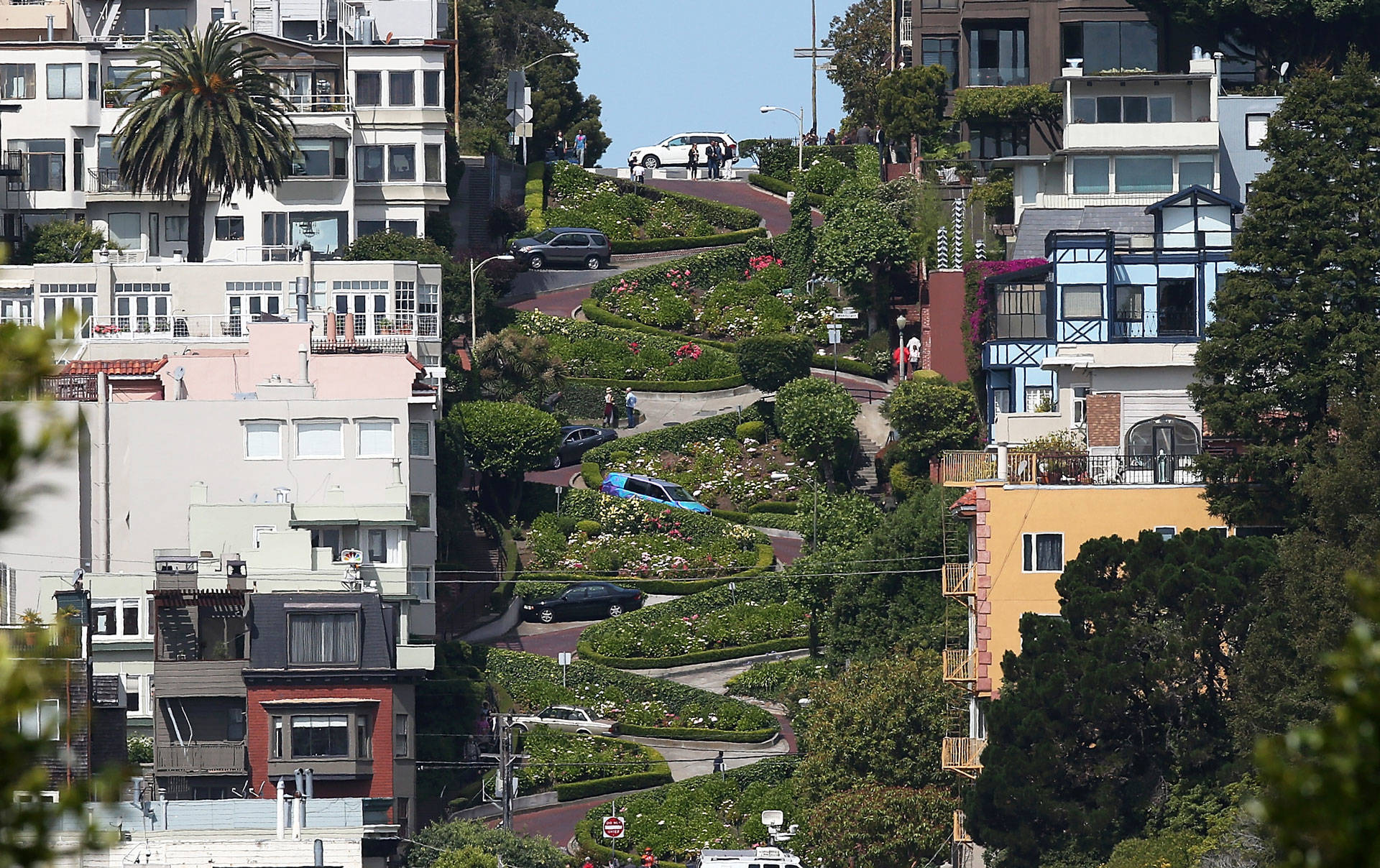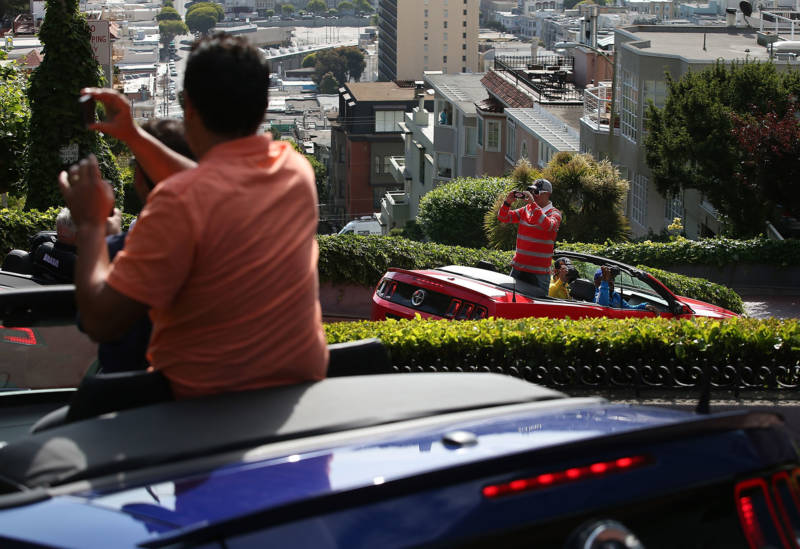The state Assembly on Thursday voted to approve a pilot toll and reservation program for the famously crooked section of San Francisco’s Lombard Street in a bid to reduce crowds and ease traffic on the world-renowned thoroughfare.
The 600-foot-long stretch of Lombard attracts more than 2 million visitors a year, creating lines of cars that stretch for blocks and clog the Russian Hill neighborhood, said Assemblymember Phil Ting, D-San Francisco, who sponsored the bill, AB 1605.
The new toll system is not expected to be in place before 2020, officials said, and it’s not clear how much the fee would be. San Francisco transportation officials have proposed requiring visitors to make a reservation online and pay $5 for each vehicle — another plan calls for online reservations and a $10 charge on weekends and holidays.

